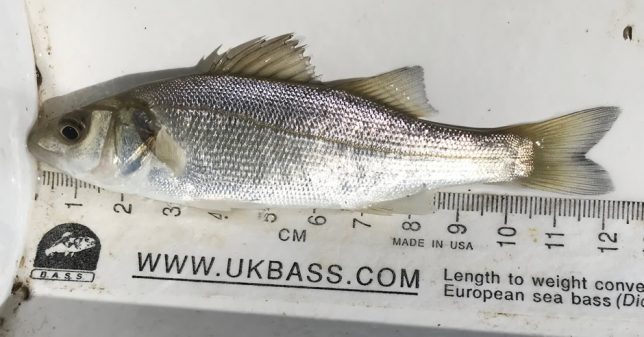C-Bass (Population studies in support of the conservation of the European sea bass) was a Defra funded project that ran from 2013 – 2020 and here are just a few interesting facts it uncovered.

- Bass do make long journeys. In the C-Bass study, the maximum distances tagged bass travelled from the point of release were 419 km in the English Channel, 668 km in the southern North Sea, and 419 km in the Irish Sea.
- Stock structure remains a key uncertainty, alongside the level of mixing between the Northern and Biscay management areas. Initial results suggest that a separate Irish Sea stock is unlikely. There appears to be substantial mixing between breeding stocks in the English Channel, the North Sea, and the Irish Sea.
- Across all areas there was movement from shallow inshore areas in the summer (presumed feeding grounds) to deeper waters in the winter (presumed spawning grounds). English Channel bass returned to shallow grounds from April onwards then again migrated to deeper waters between January and April the following year.
- Adult bass migrate to pre-spawning areas in the western English Channel between October and December as females seek water warmer than 9°C. Spawning then starts offshore in the Celtic Sea and western English Channel from February and spreads east as the water attains 9°C.
- The onset of spawning is thought to be triggered by photoperiod (day length) rather than an increase in temperature.
- The main spawning areas are thought to be in the English Channel (Hurd’s Deep northwest of Guernsey), St George’s Channel connecting the Irish Sea and the Celtic Sea, and Western Deep Water in the southern North Sea.
- In years with stronger westerly winds and warmer conditions, spawning is likely to penetrate farther east in the Channel and into the North Sea.
- Spawning involves the release of ripe ova in two to three batches over a two- to three-week period.
- The recruitment process is particularly precarious and influenced by many drivers, the result of which can be observed as recruitment rates with high levels of inter-annual variation. In the Good Spawning Years (GSY), winds were relatively strong and consistent westerlies which aided the arrival of more fry in the estuaries. Warmer sea temperatures also assisted the process of settlement.
- Our understanding of both the drivers of year class strength and the contribution of different nursery areas to the stock needs further studies in a broader range of estuaries. BASS is involved in two Fisheries Industry Science Partnerships (FISP) applications which could involve BASS members and make a positive contribution to this.

This is just a snapshot of the information C-Bass research has revealed. To see more of the work the BASS Science Group has been collecting and collaborating on, read the C-Bass Insights article
Author: Robin Bradley (BASS Science Group Lead)
Photos: Young bass, Robin Bradley; Tagging images, Cefas.